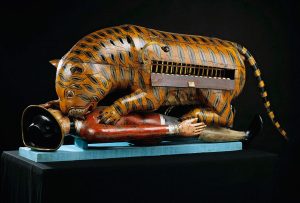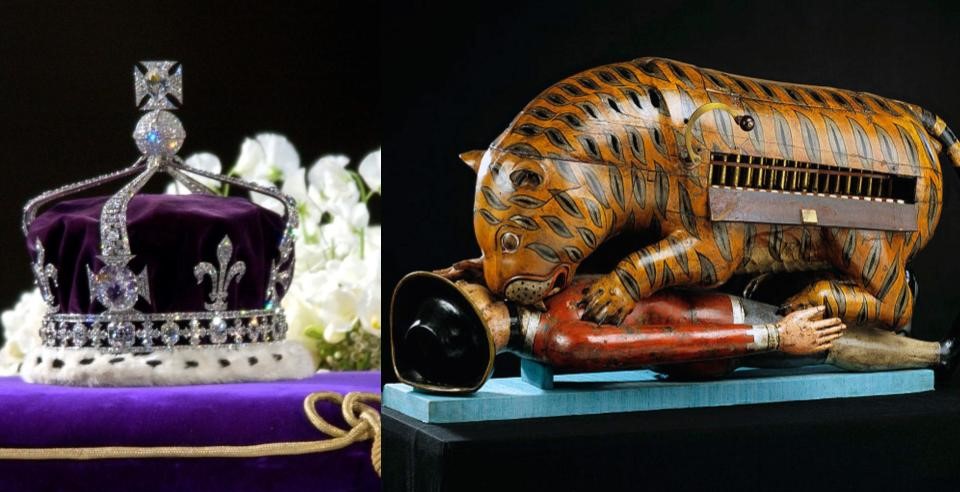Krispin Joseph PX
Crimes related to Art and culture are currently ranked as the third largest criminal enterprise globally. In comparison with terrorism, drugs and violent crimes, art and cultural crimes are not considered “crimes” against people and their life. What is Art crime? Art crime is an umbrella term; many things are in that phrase; heritage theft, looted artefacts, stolen artworks from different locations, and other art-related thefts.
Art and heritage theft means losing money, culture, and history. When we lose something valuable from museums or private collections and displays, we lose a cultural identity forever, lose history suddenly. Colonialism was a collective theft of Art and artefacts from Asian-African-South American countries. Before colonialism, all other invasions are invasions to the Art and cultural heritage of the country. King Napoleon looted Art and sent as much to France from different countries, and the Nazis stole cultural property from every land they invaded. Why ISIL and ISIS destroyed Archaeological sites like the Bamiyan Buddha statue after getting power in Afghanistan was because they knew the significance of Art and culture and how they interlink people and their life through historical documents.
Art and heritage crimes in India mainly happened in the Colonial period, and many precious things were already looted by the coloniser, regardless of whether they were British, Danes, Dutch, Italians, Belgians, Portuguese or Spanish. For a colony, the coloniser is more powerful and technically advanced to loot and export what they stole from the country. In an Indian scenario, resources like ancient artefacts, gold, pearls, and natural wealth are the important looted things. Looting Art historical objects from the defeated country is a “tradition” which ruled over centuries, claiming the valuable objects symbolised victory over a country.

Under the colonial domain, various exploitation occurs in India, including physical-sexual abuse, labour and human resources, natural resource and knowledge, wealth and heritage exploitation. After different colonial powers, the British became dominant, converting Indian land into agricultural filed for needed materials. They cultivate things like jute, cotton, sugar, tea, coffee and wheat in India, and for this mass volume of cultivation, they used our human resources as labour. They bring railways into India to transport goods from various parts of the country into the harbour to export to their homeland. They use other countries’ rich resources and materials for their people’s luxury and well-being. Parallel to this exploitation, Cultural-Heritage theft also happens in India. Many Indian heritage icons are now in the former ‘Coloniser’; they use those icons, including Kohinoor, as their heritage and history. The British people or the Galleries are not hesitating to exhibit these stolen items in their museums and Galleries and the Crown.
The Kohinoor, one of the world’s most famous diamonds, is now positioned in the Crown of the Prince of the Great Briton. Now, people of India frequently ask for this renowned diamond, and now that ‘request’ itself is famous because of the frequent denial of the British. The Crown was made for Queen Mother Elizabeth, and they ornamented with stolen objects from different colonies. India was the only source of diamonds in the world before the discovery of diamond mines in Brazil in 1725.

Credit: The history Today
The discussion on repatriating to India is ongoing as a political stunt and propaganda. Repatriating is essential for Kohinoor and other innumerable artefacts that were stolen\ snatched from India in the colonial period and purchased from the heritage smugglers.
The story of Indian heritage theft is not ended with Kohinoor, which continues to modern times. Many things are stolen from different parts of India, from Indus Valley excavation done by British archaeologists, and British officials and bureaucrats looted many Indus artefacts, including seals. It is not easy to give an account of the stolen artefacts from India in the colonial period. The British took away the famous Tipu Sultan tiger, ring and sword after they defeated him in a war. The sword returned to India after Vijay Mallya bought it in the auction, but others are still in the British museum.
The stolen story of artefacts and precious materials from a country in the colonial period is a challenging subject. Renowned museums and galleries from different countries have started to return stolen artefacts to their mother country. Last year, The Australian National Gallery decided to return stolen antiques to India, which they purchased from an arrested Art smuggler Subhash Kapoor. After the arrest of Subhash Kapoor, the National Gallery of Australia decided to give back 14 artefacts purchased from him, and many other Galleries and museums are in an ethical crisis. Subhash Kapoor runs a Gallery in New York and sold many Indian artefacts for many Galleries, including the Asian Civilizations Museum in Singapore, the Metropolitan Museum of Art in New York, the Los Angeles County Museum of Art, the Museum of Fine Arts in Boston, and Peabody Essex Museum in Salem, Massachusetts.
Colleen Margaret Clarke and Eli Jacob Szydlo wrote a book titled ‘Stealing History: Art Theft, Looting, and Other Crimes Against Our Cultural Heritage’, (2017), which deals the cultural crime. In this book, the authors share the people’s concerns that art and cultural crimes do not directly damage anyone. ‘Art and cultural crime are not simply focused on museums or private displays; the loss of Art directly affects our cultural identity, write Colleen Margaret Clarke and Eli Jacob Szydlo. Why are countries arguing for the return of the artefacts because they are trying to protect world culture through their collection? Why does our cultural identity belong to another country’s gallery or museum? How can they resonate with the value of the heritage without a proper understanding of the artefacts?
What culture is a complicated question because there is no straight answer, and sometimes the artefacts and Art tell more clearly about the culture. When we protect artefacts, are we protecting our culture? If that is true, how can we protect those artefacts from theft? Another thing is how can we bring back our cultural identity to home?

Krispin Joseph PX, a poet and journalist, completed an MFA in art history and visual studies at the University of Hyderabad.





